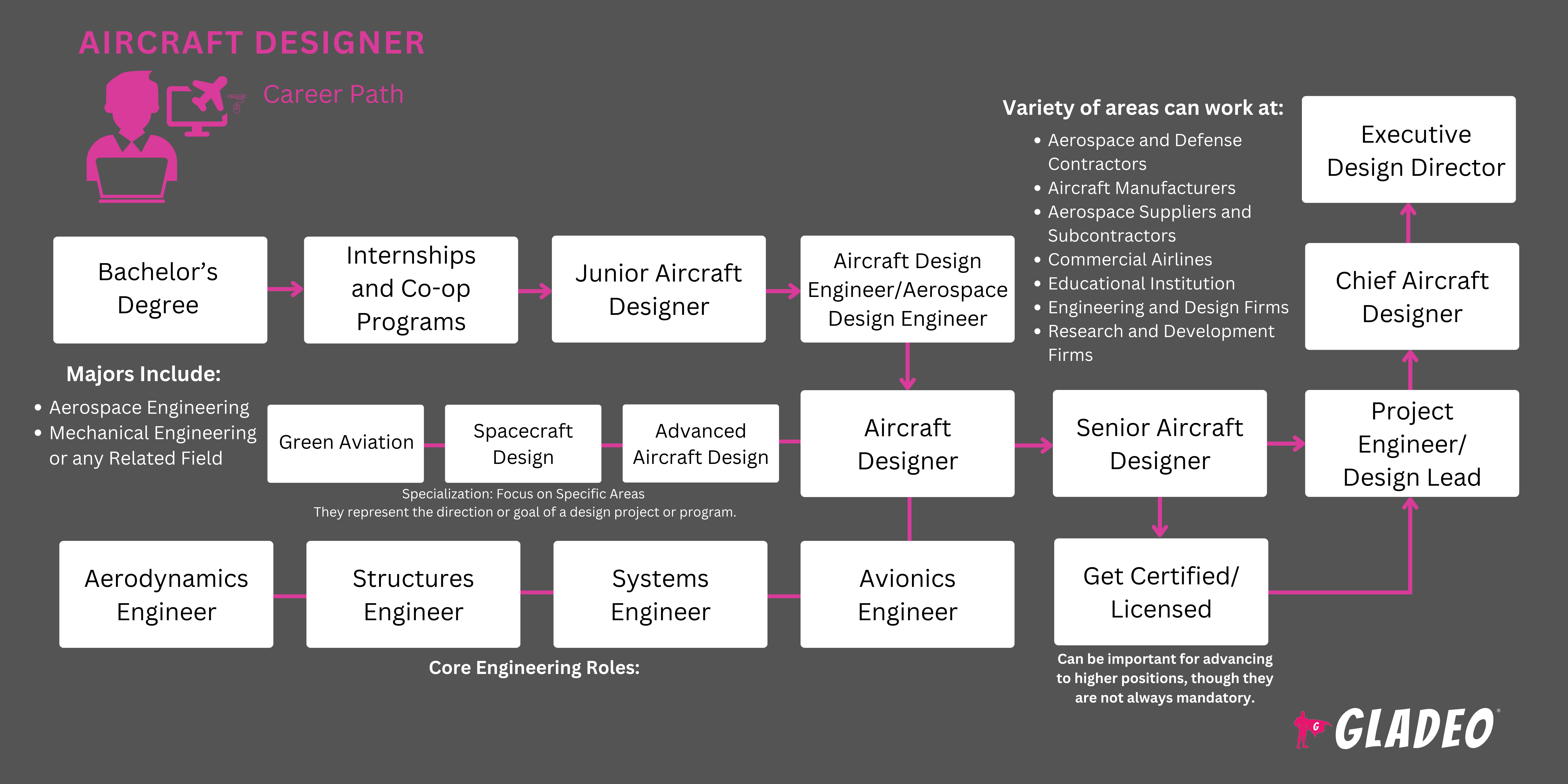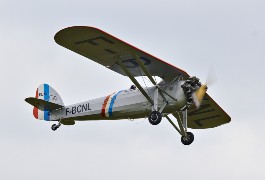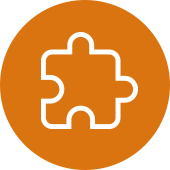聚光灯
航空航天工程师、飞机工程师、飞机系统设计师、航空航天设计工程师、航空工程师、飞机设计与开发工程师
Between civilian and military aviation fleets, there are ~220,000 aircraft in the United States alone – and that’s just a tiny fraction of the total number worldwide! Every year, many of these aircraft designs are reviewed and updated to make improvements using the latest information in aerodynamics, materials science, structural analysis, and propulsion. This complex work is performed by expert Aircraft Designers, in collaboration with engineers, manufacturers, and government agencies.
From commercial airplanes and military jets to helicopters and unmanned aerial vehicles, Aircraft Designers address challenges like boosting fuel efficiency, enhancing performance, reducing noise, and improving structural integrity and safety. They must also, of course, ensure designs are feasible and compliant with regulations.
Once initial designers are approved, Aircraft Designers use sophisticated software tools for modeling and simulation to test their designs under hypothetical conditions before physical prototypes are built. It can take several years for a new “clean sheet” design to develop from the concept stage to actual production and use in the real world.
- Working on innovative, high-performance aircraft designs
- Contributing to advancements in aviation technology
- Opportunities to work on a variety of projects
- Collaborating with a multidisciplinary team of experts
工作日程
- Aircraft Designers typically work full-time, often exceeding 40 hours per week. They may need to work extra hours to meet project deadlines or resolve design issues.
典型职责
- Participate in reviews of existing designs and provide technical expertise
- Meet with stakeholders to review objectives, budgets, and timeframes for new or revised design projects
- Develop and refine aircraft designs using computer-aided drafting software
- Create detailed technical drawings and documentation
- Coordinate with manufacturing teams to ensure feasibility, efficiency, and adherence to schedules
- Present design concepts to stakeholders. Incorporate feedback and ensure compliance with aviation safety regulations and standards
- Conduct simulations, stress tests, and wind tunnel tests to analyze aerodynamic properties, validate design performance, and evaluate materials for weight, durability, and cost-effectiveness
- Manage design iterations and maintain version control of documentation
- Collaborate with engineers to integrate systems, components, and advanced technologies such as avionics and propulsion systems
- Assess environmental impact and work on eco-friendly design solutions
- Conduct failure analysis and work on improvements for existing designs
额外责任
- Engage in continuous professional development through courses and certifications
- Attend industry conferences and workshops to stay abreast of trends
- Collaborate with universities and research institutions
- Publish research findings and contribute to industry journals
- Mentor junior designers. Lead cross-functional teams in large projects
- Provide technical support during the manufacturing and testing phases
- Contribute to the development of company design standards and best practices
- Support marketing and sales teams with technical information
软技能
- 注重细节
- 沟通
- 创造性
- 批判性思维
- 决策的制定
- 创新
- 耐心
- 劝说
- 解决问题
- 团队合作
- 时间管理
技术技能
- 2D graphic design tools: Adobe Illustrator, Photoshop, and InDesign
- Project management software: Microsoft Project, Trello, or Asana
- Collaboration tools: Slack or Microsoft Teams
- Computer-aided drafting and 3D modeling: AutoCAD, CATIA, SolidWorks, Rhino, and Siemens NX
- 计算机辅助制造
- Computer numerical control (CNC) machining
- Electrical systems and integration: Altium Designer, EAGLE, and Mentor Graphics
- Ergonomics and Human Factors Engineering
- Human-Machine Interface design: Sketch, Adobe XD, or Axure RP
- Knowledge of materials: metals, composites, plastics, and their use in manufacturing processes
- Manufacturing constraints and lean manufacturing principles
- Photorealistic rendering and animations: KeyShot, V-Ray, or Lumion
- Product lifecycle management: Siemens Teamcenter or PTC Windchill
- Aviation regulatory standards and compliance
- Simulation software: ANSYS, Simulink, and MSC Nastran for structural integrity, aerodynamics, and crashworthiness testing
- Sound design and acoustics: EASE or SoundPLAN
- Surface modeling: ICEM Surf or Alias Surface
- Sustainability and eco-design
- Technical drawing and modeling: Alias, Blender, and DraftSight
- Vehicle dynamics and engineering: aerodynamics, structural analysis, propulsion systems, and avionics
- Virtual and augmented reality tools: Unity, Unreal Engine, or Autodesk VRED
- Aerospace manufacturers and suppliers
- Commercial airlines
- 国防承包商
- 教育机构
- Engineering and design firms
- 政府机构
- Private aerospace companies
- Research and development firms
Aircraft Designers work on cutting-edge projects in dynamic work environments. They must collaborate with teams to produce highly accurate, reliable designs that comply with stringent safety and performance standards. The role demands meticulous attention to detail and continuous professional development to keep up with evolving aviation technology and regulations.
The job can require long hours sometimes, and the pressure to meet exacting standards is tough on some workers. Many designers, however, love the blend of technical challenges and creative opportunities. They find great satisfaction in seeing their designs come to life, especially after years of hard work.
A major trend in aircraft design is the use of lightweight composite materials offering reduced weight and improved fuel efficiency. Another trend is the development of electric and hybrid propulsion systems promising quieter, cleaner, and more efficient alternatives to traditional engines. Advanced avionics and automation technologies are also transforming the design industry while boosting safety and reducing pilot workload. Designers must keep up with these and other advancements during the design process to help enhance sustainability.
Aircraft Designers often enjoyed building and flying model airplanes, experimenting with design and mechanics, and engaging in STEM-related activities such as science fairs and robotics clubs.
- Aircraft Designers usually have a bachelor’s (or in some cases, a master’s) degree in aerospace engineering, mechanical engineering, or a related field
- Some students major in mechanical engineering with a minor in aerospace engineering
- Completing a dual bachelor’s/master’s program may help save time and money
- Note, that some designers aren’t engineers. They come from an industrial design background but work closely with engineers to ensure designs are technically feasible
- For those without engineering degrees, specialized courses and certifications may provide sufficient technical knowledge, along with practical industry experience via internships, co-op programs, or hands-on projects
- As noted by Flying Magazine, “Most positions require a bachelor’s degree within a broad range of engineering or science fields in addition to aeronautics or astronautics, such as mechanical, electrical, structural, materials and even civil engineering. Other jobs might require training in systems safety, human factors, air-vehicle integration or aesthetic design. Most people entering the field are expected to have CAD/CAM and CNC training and capability.”
- Relevant coursework for aspiring aircraft designers includes:
- Aerospace Structures
- 空气动力学
- Propulsion Systems
- Aircraft Performance and Design
- Flight Mechanics
- Avionics Systems
- Materials Science for Aerospace
- Computational Fluid Dynamics (CFD)
- Finite Element Analysis (FEA)
- Aircraft Systems and Control
- Engineering Design Principles
- Safety Standards and Regulations in Aviation
- Sustainable Design and Eco-Friendly Practices
- Technical Drawing and 3D Modeling
- Virtual and Augmented Reality in Design
- Internships or co-op programs provide invaluable practical experience and hands-on learning opportunities
- Optional certifications that can enhance one’s credentials include:
- Additive Manufacturing Certification
- Aircraft Certification Specialist
- AS9100 Certification (certification in Aerospace Quality Management Systems)
- Certified Aerospace Technician
- Certified CAD Professional
- Certified CATIA Associate
- Certified Composites Technician
- Certified Professional Engineer
- Certified SolidWorks Professional
- 系统工程专业认证
- Project Management Professional
- Six Sigma Certification
- Sustainable Design Certification
- Staying current with evolving technologies and regulations is essential and can be done via professional development workshops or courses
- Joining professional organizations such as the American Institute of Aeronautics and Astronautics or the Society of Aerospace Engineers can provide networking opportunities and access to industry events
- Decide on a program format (on-campus, online, or hybrid) that suits your needs.
- Seek an ABET-accredited program at a school with strong aerospace engineering, mechanical engineering, or programs, well-funded labs, research opportunities, internships, and co-op programs with industry partners.
- Weigh the cost of tuition against available financial aid and scholarship opportunities.
- Assess faculty qualifications and alumni accomplishments.
- Consider post-graduation outcomes like job placement rates.
- Focus on art, design, and STEM courses like calculus, differential equations, linear algebra, statistics and probability, numerical methods, engineering mathematics, complex variables, physics, and computer science
- Study the history of aircraft designs, problems, and solutions. Review the most innovative designs and why they worked
- Think about the types of aircraft you want to design, or if you just want to focus on a particular component of an aircraft
- Join engineering clubs and take part in science fairs and competitions
- Seek internships, part-time jobs, cooperative educational programs, mentorship opportunities, or apprenticeships in design studios or aircraft manufacturing plants
- Keep track of your work and academic accomplishments for your resume and college applications, and build a portfolio of projects and research experiences
- Stay updated with industry trends and advancements by reading articles in Aircraft Design and other journals, or by watching informational videos
- Reach out to do an informational interview with a working Aircraft Designer. See if you can shadow them at work for a day
- Join online aircraft design-related discussion groups and professional organizations like the American Institute of Aeronautics and Astronautics
- 查看招聘信息并阅读职位描述,了解雇主目前正在寻找哪些资格和专业人才
- Being a pilot isn’t required to be a successful Aircraft Designer, but having a private pilot’s license could show commitment to the aviation industry

- Jobs like these are often found through networking, so go to aviation-related events to grow your network
- Make a professional LinkedIn profile and website to showcase your work
- 研究潜在的雇主,访问他们的职业网页,了解职位空缺情况
- Top employers of aircraft designers in America include Boeing, Lockheed Martin, Northrop Grumman, Raytheon Technologies, General Dynamics, NASA, Gulfstream Aerospace, Textron Aviation, Blue Origin, and SpaceX
- Note, you may have to relocate to be close to where the jobs are!
- Be patient. Apply for internships, apprenticeships, co-op programs, and entry-level positions
- Ask your academic program manager if they have ties with local employers or recruiters
- Explore job listings on portals such as Indeed, LinkedIn, and Glassdoor
- Use an Aircraft Designer resume template to get ideas for formatting and phrasing
- Include relevant resume keywords such as:
- 3D Modeling
- Advanced Composites
- 空气动力学
- Aerospace Engineering
- Aircraft Systems Integration
- 计算机辅助设计
- CATIA
- Flight Mechanics
- 材料科学
- Mechanical Engineering
- Product Lifecycle Management
- Propulsion Systems
- Prototyping
- Regulatory Compliance
- SolidWorks
- Stress Analysis
- Thermal Analysis
- Wind Tunnel Testing
- Create a digital portfolio showcasing your projects and contributions. Detail your roles, skills used, and the impact of your work
- Prepare for interviews by brushing up on relevant terminology and trends
- Ask former supervisors and college professors for references or recommendation letters
- Utilize your university’s career center for resume help, mock interviews, and job fairs
- Review potential job interview questions, such as “What techniques do you use to ensure your designs are both aesthetically pleasing and functional?” or “How do you incorporate feedback from stakeholders into your design process?”
- Stay informed about the industry. Be ready to discuss trends and technologies during interviews
- 面试时穿着专业
- Discuss advancement opportunities with your supervisor
- Volunteer for challenging projects to demonstrate your skill and adaptability
- 积极寻求更多的教育和培训,使你的职业和雇主受益
- Stay current with the latest software, tools, and methodologies
- Consider specialized certifications such as Aircraft Certification Specialist, AS9100 Certification, Certified Aerospace Technician, Certified CAD Professional, or Certified Professional Engineer
- Knock out your graduate degree to deepen your expertise
- Explore different areas within Aircraft Design to broaden your expertise. For example, if you usually only work on airplanes, try designing helicopters or drones
- Travel to other countries to learn about their design programs and styles. Study the work of the industry’s top designers
- Build strong relationships with colleagues, managers, and stakeholders
- Mentor junior colleagues or interns to develop leadership skills
Consider switching employers to advance your career. Move to cities known for aircraft manufacturing jobs such as Seattle, Washington; Wichita, Kansas; Fort Worth, Texas; Savannah, Georgia; Mobile, Alabama; and Long Beach, California - Keep active in professional associations to grow your network and reputation. Go to conferences, volunteer to serve on committees, and contribute scholarly articles to industry journals or publications
网站
- Aerospace America
- 航空航天工业协会
- Aerospace Manufacturing and Design
- Aerospace Testing International
- Airbus Technical Publications
- 飞机所有者和飞行员协会
- 美国航空和航天学会
- 美国机械工程师协会
- 国际无人驾驶车辆系统协会
- Aviation Week & Space Technology
- Boeing’s Innovation Quarterly
- Canadian Aeronautics and Space Institute
- Defense Advanced Research Projects Agency
- Defense News
- European Space Agency
- 实验飞机协会
- 美国联邦航空管理局
- Flight International
- Institute of Aeronautics and Astronautics
- Institute of Electrical and Electronics Engineers Aerospace and Electronic Systems Society
- Institute of Mechanical Engineers
- International Council of the Aeronautical Sciences
- 国际系统工程理事会
- International Journal of Aerospace Engineering
- Journal of Aerospace Engineering
- Journal of Aerospace Information Systems
- Journal of Aircraft
- Journal of Propulsion and Power
- Journal of Spacecraft and Rockets
- 国家航空航天局
- Royal Aeronautical Society
- Society of Aerospace Engineers
- 航空航天公司
- 垂直飞行协会
书籍
- Aerodynamics for Engineers by John Bertin and Russell Cummings
- Aircraft Design: A Conceptual Approach, by Daniel P. Raymer
- Introduction to Flight, by Mary Bowden and John Anderson
Aircraft Design is a rewarding and potentially lucrative career option, but it can be a tough field to break into. If you’re curious about jobs that require some similar skills, consider our list below!
- Advanced Driver-Assistance Systems Engineer
- 航空航天工程师
- Automotive Aerodynamics Engineer
- Automotive Ergonomics Specialist
- Automotive Safety Systems Designer
- CAD 技术员
- Concept Artist
- Digital Modeler
- 电气工程师
- Electric Vehicle (EV) Engineer
- 环境工程师
- Fuel Cell Engineer
- 平面设计师
- 人因工程师
- 工业设计师
- 制造工程师
- Materials Scientist
- 机械工程师
- 机电工程师
- Process Engineer
- 产品设计师
- 研究科学家
- 机器人工程师
- 安全工程师
- Thermal Systems Engineer
- Transmission Engineer
- 用户体验(UX)设计师
- Vehicle Dynamics Engineer
- Virtual Reality (VR) Specialist
新闻联播

特色工作

在线课程和工具








